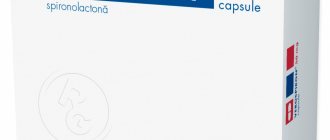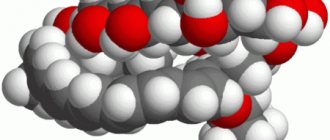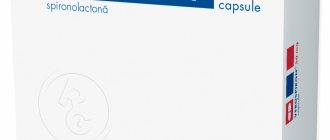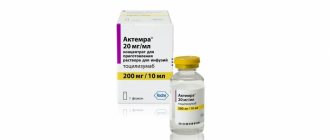Created in the middle of the last century, the tranquilizer Phenazepam has long helped to cope with mental illness, overcome fear, anxiety and panic attacks. However, this drug has many side effects; it “clouds” consciousness, provokes hallucinations and leads to the formation of severe addiction. If the dosage is violated, the drug can be not only harmful, but also dangerous. Today, this drug is practically not used in medicine; milder drugs are chosen as sedatives.
- Drug Phenazepam
- What is Phenazepam?
- Composition of Phenazepam
- Photo of the drug: what it looks like
- Effect of Phenazepam: narcotic effect
- Duration of action of Phenazepam
- Why is the drug in demand among drug addicts?
- Side effects of Phenazepam: why it’s dangerous
- Release form of Phenazepam
- Signs of using Phenazepam
- How long does Phenazepam leave the body?
- How long does it stay in the blood?
- How long does it stay in urine?
- Consequences of taking Phenazepam: effect on the body
- Phenazepam poisoning
- Weakness from use
- Reduces blood pressure
- Pregnancy and phenazepam
- How much Phenazepam can you take without getting used to it?
- Dependence on Phenazepam
- Signs of overdose
- Withdrawal from Phenazepam
- Treatment of addiction to Phenazepam
We will select an individual treatment plan
Free consultation 8-800-200-27-23
But drug addicts still “get” Phenazepam in pursuit of new sensations and fall into a strong addiction, without even thinking about how quickly the brain and nervous system are destroyed. Today, a fair number of patients in the drug treatment department of a psychiatric hospital are drug addicts on Phenazepam. Many of them have lost basic self-care skills and will never be able to get rid of mental disorders.
Drug Phenazepam
The effect of phenazepam is similar to intoxication with alcoholic drinks, so former alcoholics often switch to this drug. However, they do not think that this tranquilizer has an extremely negative effect on the nervous system and irreversible mental illness.
When you first take a psychoactive substance, a feeling of relaxation comes, relaxes the muscles, so the addict can feel lightness and serenity. The drug greatly slows down the functioning of the nervous system, so the person becomes inhibited, all reflexes are dulled, and problems arise with the perception of sounds and visual images.
What is Phenazepam?
Phenazepam is a powerful tranquilizer with a very crude effect, which has a lot of side effects and leads to the formation of severe addiction. In the mid-20th century, it was used to treat insomnia, anxiety, and as an anticonvulsant for epilepsy. It is produced in tablets or injections for intramuscular administration. The therapeutic effects of the drug are due to the effect of the active substance on benzodiazepine receptors.
The stimulating effect of the substance penetrates the reticular formation, nonspecific centers of the thalamus and the amygdala complex. The sedative effect is achieved by blocking spinal reflexes. The active substance is distributed throughout the body through the gastrointestinal tract, processed in the liver and excreted by the urinary system.
HOW TO MOTIVATE A DEPENDENT FOR TREATMENT
Composition of Phenazepam
The active component of phenazepam is bromodihydrochlorophenylbenzodiazepine .
This active substance blocks the work of many receptors and inhibits the activity of neural connections. Due to this, anti-anxiety, sedative and anticonvulsant effects are achieved. The drug has multiple contraindications and can cause addiction.
Photo of the drug: what it looks like
Effect of Phenazepam: narcotic effect
Pharmacy addicts regularly use the drug to achieve a feeling of euphoria and tranquility, but obtaining a sedative is not easy (a prescription from your doctor is required). This effect on the body is due to the fact that the active substance belongs to the group of benzodiazepines. After entering the blood, it slows down polysynaptic spinal reflexes and also minimizes the excitability of subcortical brain structures. Because of this, attacks of anxiety and aggression are reduced. But the active substance is highly addictive because it works like a drug:
Lifts your mood and eliminates anxiety. A person feels liberated and forgets about all troubles.
There is a general inhibition of all processes in the brain, so the reaction to external stimuli decreases.
The muscles relax, which leads to the elimination of physical tension. A person feels so light, as if he has returned to childhood.
Duration of action of Phenazepam
The duration of action of a tranquilizer on the body depends on the individual characteristics, form and dosage taken. If you follow medical recommendations, the sedative effect will last for 3-6 hours. A person begins to feel the effect of the tablets 15-20 minutes after taking the drug.
When Phenazepam is combined with other sedatives, alcohol and drugs, the effect of the drug is greatly enhanced and its duration increases. Even smoking has an effect on the drug, so doctors recommend limiting tobacco during treatment. All these experiments have an extremely negative impact on the functioning of the nervous system and brain, leading to mental disorders and even death in case of overdose.
Why is the drug in demand among drug addicts?
Daily use of narcotic substances depletes not only the body's reserve forces, but also the wallet. Drug addicts spend all their money buying drugs. But with constant use, they cause psychological, chemical and physiological dependence. People increase their dosage but still experience nausea, headaches, joint pain, depression and insomnia.
Side effects of Phenazepam: why it’s dangerous
You can identify a pharmacy drug addict by 5 signs:
- Unsteadiness of gait is observed. It seems as if a person is floating in space.
- There is no reaction to light. The pupils are greatly dilated. The eyes become red and itchy due to dryness.
- The epidermis acquires a bluish tint and turns pale.
- Emotional swings are very frequent. An unreasonable smile appears, which is replaced by aggression and hysteria.
- Bad breath appears due to the fact that the function of the gastrointestinal tract is disrupted and a thick layer of plaque forms on the tongue.
If a neurologist or psychotherapist has prescribed Phenazepam for you, then take it strictly according to the instructions and familiarize yourself with all the side effects and contraindications in advance. Do not increase the duration of use and dosage, because the drug is addictive and negatively affects brain function.
IMPORTANT: it is not advisable for addicted people who are in remission to take Phenazepam, since due to addiction they can take the tranquilizer in handfuls.
Dependent people tend to take tranquilizers in large quantities and mix the use of Phenazepam with alcohol or drugs.
After undergoing treatment and a rehabilitation program for addicts , a person can recover and start a new life.
Features of prescribing drugs to calm nerves and against depression
Medicines for depression and anxiety have a pronounced effect; these are potent drugs that have a number of contraindications and side effects if the doctor’s prescription and instructions for use are not followed.
This is why you cannot buy medications for depression without prescriptions in our country. It is impossible to either prescribe or stop taking anti-depression medications on your own; this can affect mental health and lead to the development of depressive conditions and even suicidal thoughts. Therefore, it is very important to follow all the doctor’s recommendations, take medications for depression and stress in the dosage in which the doctor prescribed them. Even if a person’s mood improves after a week and the main symptoms disappear, they cannot stop taking the medicine.
The drug method is quite effective for anxiety-depressive disorders and neurotic conditions. It is important that the diagnosis of depression be made by a specialist, since taking medications simply to lift your mood in the absence of mental abnormalities can only cause a number of side effects. Antidepressants, antipsychotics and tranquilizers are potent drugs that are prescribed only with a doctor-confirmed diagnosis. Self-medication is unacceptable. Next, we will consider the main medications for stress and depression that are prescribed to patients.
- You can't convince me to get treatment
? - We will help you with motivation for treatment. As a rule, it is difficult for loved ones to persuade or force an addict to undergo treatment. World experts have developed EFFECTIVE motivation schemes, using which you can lead an addict to the decision to seek help. 8
Release form of Phenazepam
The drug is available in the form of tablets and injections for intramuscular and intravenous administration.
The drug was recognized as dangerous and began to be sold by prescription only recently, so it can still be found in home medicine cabinets as a remedy for insomnia. For practically healthy people (with anxiety, sleep problems, nervous tension, lower back pain) it is no longer prescribed, choosing drugs with a milder effect. Phenazepam is now used only for severe mental disorders and for the relief of seizures during epileptic seizures.
Tranquilizers for depression and neurosis
Kinds:
- sleeping pills;
- sedatives;
- muscle relaxants.
In the first case, there is a significant reduction in anxiety, the quality of sleep improves and the duration of sleep increases. Doctors do not recommend taking sleeping pills for a long time or independently extending the period of use prescribed by a specialist, since drugs in this group can cause drug dependence. Because of this feature, sleeping pills are popular among pharmacy drug addicts.
Sedatives have a positive effect on the central nervous system; they can be either herbal or synthetic and have a rather mild effect on the central nervous system. They help restore balance between the excitation and inhibition systems, enable a person to react more calmly to stressful situations and eliminate sleep problems.
Muscle relaxants are medications that reduce the tone of the skeletal muscles and reduce motor activity. They block H-cholinergic receptors and stop the supply of impulses to the muscles, due to which they stop contracting.
Tranquilizers are used for depression and panic attacks, sleep problems, as well as for:
- behavioral and mental disorders;
- neuroses;
- psychosis;
- personality disorders;
- causeless fears;
- schizophrenia;
- when relieving abstinence from alcohol and drug addiction;
- eczema;
- anorexia;
- bulimia;
- arrhythmias;
- hypertension.
In some cases, these psychotropic drugs are prescribed to children.
Medicines of this group should not be used by people with alcohol or drug intoxication. Doctors do not recommend medications for the treatment of neuroses and depression and for work involving increased concentration, including for drivers. As with the treatment of depression with antidepressants, to reduce the risk of withdrawal symptoms when stopping the medication, it is necessary to reduce the dosage gradually. Your doctor should tell you about this. In addition, a long course of its use is fraught with the development of drug dependence, so the course is divided into short periods. Pregnant and lactating women should not use tranquilizers.
The drugs help cope with stress, make it easier to endure traumatic situations, eliminate fears, phobias, and panic attacks without suppressing cognitive functions. Often tranquilizers help eliminate sleep problems, frequent awakenings, insomnia at night, and drowsiness during the day. In the treatment of psychosis, these medications are used as part of complex therapy that help eliminate the side effects of antipsychotics. But the drugs themselves have various side effects, including muscle weakness, lethargy, decreased concentration and reactions, libido, memory impairment, drop in blood pressure, and nausea.
Tranquilizers are quite dangerous drugs, some of them are classified as pharmaceutical drugs, since if the duration of treatment and dosage are violated, psychophysical dependence can occur. They are also known to be used for recreational purposes. If you notice that your loved one has been taking the same medication for a long time, you should seek help from the Center for Healthy Youth. We work throughout Russia. Application is free and anonymous.
Anonymous 24 hours a day Activity is licensed Patient accompaniment
Full range of narcology services:
- tests
- drug testing
- detox
- encoding
- psychiatry
- binder
- withdrawal symptoms
8+7
Signs of using Phenazepam
As with any other addiction, a drug addict using Phenazepam can be recognized by two physical states: intoxication and withdrawal after the drug wears off.
In a state of narcotic intoxication with a tranquilizer, the addict becomes lethargic and severely inhibited, abnormal smoothness and slowness appear in movement, speech and actions. Since the drug is used as a sleeping pill, its large dosages lead to the fact that a person can sleep for a long time and soundly.
Due to an increase in the pain threshold and blocking of receptors indicating a state of drug intoxication, a person almost does not feel pain, does not react to tastes and smells, and is not irritated by very loud sounds and harsh light. Together with the resulting hallucinations, this often leads to death. Accidents often happen to drug addicts on Phenazepam: they “go out” of the window, bleed from cuts without taking any measures, suffocate from the gas being turned on, grab onto electrical wires, etc. A sudden change in mood can lead to suicide attempts.
In general, the state of a drug addict when intoxicated with Phenazepam is extremely dangerous not only for himself, but also for the people around him, especially close relatives living with him.
Find out treatment recommendations without leaving home for free
To select a treatment plan, you just need to leave a request, we will contact you to select the time and specialist you need
Submit your application
Comparison of addiction between Phenazepam and Tranquesipam
Like safety, addiction also involves many factors that must be considered when evaluating a drug.
So, the totality of the values of such parameters as “syndrome o” for Phenazepam is less than the similar values for Tranquesipam. Withdrawal syndrome is a pathological condition that occurs after the cessation of intake of addictive or dependent substances into the body. And resistance is understood as initial immunity to a drug; in this it differs from addiction, when immunity to a drug develops over a certain period of time. The presence of resistance can only be stated if an attempt has been made to increase the dose of the drug to the maximum possible.
How long does Phenazepam leave the body?
Even after the body is freed from the effects of the drug, metabolic products remain in the blood - metabolites, similar to those that remain after taking most drugs. They remain in cells and organs for up to 72 hours. The exact time for withdrawal of the drug from the body depends on the dosage of the drug, duration of administration and individual psychophysiological characteristics.
Active metabolites remaining in the body after taking a tranquilizer can still interact with alcohol or sedatives, so their use within 3-4 days after stopping Phenazepam is strictly prohibited. Even glycine can cause negative consequences.
How long does it stay in the blood?
The medicine stays in the blood for quite a long time, but its amount decreases by 2 times every 12 hours. On average, complete release of the body from Phenazepam occurs three days after taking it. During this time, you should not drive vehicles or do work that requires concentration. When tested for drugs, the drug will show a positive result throughout this period.
How long does it stay in urine?
The active substance of the drug is not soluble in water, so it remains in the body until it binds and forms soluble salts. After taking Phenazepam, a urine drug test may show up to 11 different metabolites.
Half of the substance taken is excreted through the kidneys during the first day. But the remaining metabolites remain in the body much longer and can be contained in the urine for the next 3-4 days. With regular use of the drug, the elimination period can reach 8-10 days.
DRUG ADDICTION TREATMENT in MOSCOW
Addiction treatment in Moscow
Treatment of addiction to Phenazepam should be comprehensive. Dependence occurs not only on a physiological, but also on a psychological level. A person forever remembers the feeling of peace after taking the drug, so he strives to repeat it.
Therapy proceeds according to the following scheme:
- Diagnosis and collection of patient history.
- Cleansing the body of drug breakdown products (dropper, hardware techniques).
- Elimination of health problems, removal of physiological cravings for drugs.
- Psychological rehabilitation, work with family members.
Our clinic’s specialists have extensive experience working with even the most severe cases. If you or your loved one is addicted to Phenazepam, call us.
- Service
- Service cost
- Narcologist at home
- from RUR 4,500 order a service
- Coding for alcoholism
- from RUB 5,000 order a service
- Vivitrol coding
- from RUR 26,000 order a service
- Naltrexone coding
- from RUB 35,000 order a service
- Esperal coding
- from RUB 15,000 order a service
- Coding Torpedo
- from RUB 5,500 order a service
- Double block
- from RUR 8,000 order a service
- Classic hypnosis
- from RUB 13,000 order a service
- Ericksonian hypnosis
- from RUR 8,000 order a service
- Tetlong for 3 months
- from RUB 10,500 order a service
- Coding Esperal gel
- from RUB 15,000 order a service
- Narcopsychotherapy session
- from RUB 5,000 order a service
- Doublet - express output and encoding
- from RUB 13,500 order a service
- Hospitalization
- from RUB 5,000 order a service
- Withdrawal from binge drinking in hospital
- from RUR 2,000/day order a service
- Rehabilitation from alcoholism with a guarantee
- from RUB 25,000/month. order a service
- Rehabilitation from drug addiction with a guarantee
- from RUB 25,000/month. order a service
Consequences of taking Phenazepam: effect on the body
When taking large doses of the drug, Phenazepam changes a person’s consciousness, destroying his brain and nervous system and leading to serious mental disorders.
All internal organs of the patient are exposed to intoxication. Exceeding the dose leads to depletion of all systems, severe forms of poisoning and even death. Libido and potency decrease. When the drug is discontinued, psychological withdrawal, convulsions, insomnia, nausea and constant panic attacks occur. Such patients often experience suicidal thoughts.
Comparison of ease of use of Phenazepam and Tranquesipam
This includes dose selection taking into account various conditions and frequency of doses. At the same time, it is important not to forget about the release form of the drug; it is also important to take it into account when making an assessment.
The ease of use of Phenazepam is approximately the same as Tranquesipam. However, they are not convenient enough to use.
The drug ratings were compiled by experienced pharmacists who studied international research. The report is generated automatically.
Last update date: 2020-12-13 10:31:30
Phenazepam poisoning
Drug addicts who take tranquilizers live on average no more than 3-4 years. As the dosage increases, the allotted time is greatly reduced. With constant exposure to large dosages of the drug on the cerebral cortex, irreversible changes occur in it. Therefore, many phenazepam drug addicts end up in psychiatric clinics and remain incapacitated for the rest of their lives.
Poisoning of liver cells by metabolites formed when using the drug leads to the death of entire sections of the organ. Cirrhosis of the liver often develops with pronounced liver failure.
The drug also leads to kidney disease, causing kidney failure. With decompensation in the work of these two organs, death occurs, which even timely medical care cannot prevent.
Weakness from use
The drug has a strong depressant effect on the nervous system, leading to insomnia, drowsiness, fatigue, weakness and dizziness, severe headaches, weakened attention and memory, confusion, problems with coordination and orientation in space, convulsions and sudden mood swings. With prolonged use, hallucinations occur and a coma may occur.
Reduces blood pressure
The drug slows down all processes in the body, leading to a decrease in blood pressure and slower blood flow. This “sedative” effect leads to metabolic processes being disrupted, cells begin to starve, and blood vessels narrow.
Pregnancy and phenazepam
Treatment with phenazepam is strictly prohibited for pregnant and lactating women, since the active substance easily penetrates the placenta and breast milk and leads to destruction of the baby’s nervous system and brain. Even in cases of extreme necessity (epileptic seizures, psychosis), doctors choose analogues with a milder effect, for example, clonazepam or fluoxetine. In a desperate situation, when a woman’s life depends on the drug, it is used, but it is recommended to terminate the pregnancy.
In the course of ongoing research, it was scientifically proven that the drug provokes the development of congenital anomalies, such as cleft palate and cerebral palsy. Stillbirths and miscarriages are possible.
Comparison of the effectiveness of Phenazepam and Tranquesipam
Phenazepam is more effective than Tranquesipam - this means that the ability of the drug substance to provide the maximum possible effect is different.
For example, if the therapeutic effect of Phenazepam is more pronounced, then with Tranquesipam it is impossible to achieve this effect even in large doses.
Also, the speed of therapy is an indicator of the speed of the therapeutic action; Phenazepam and Tranquesipam are also different, as is bioavailability - the amount of a drug substance reaching the site of its action in the body. The higher the bioavailability, the less it will be lost during absorption and use by the body.
Dependence on Phenazepam
The addiction is so strong that in order to get a new dose, a person is ready to deceive loved ones, steal and even use violence against relatives and strangers.
Signs of overdose
The clinical picture of an overdose depends on the amount of the substance consumed, duration of use and psychophysiological characteristics.
Mild overdose may cause fatigue, drowsiness, tinnitus, and confusion. Usually this condition goes unnoticed by others, the person copes with it on his own.
The following symptoms are typical for an average overdose:
- Recession of the tongue and impaired swallowing reflex;
- Constriction of the pupils “to a point”, lack of light reaction;
- When exposed to the cornea, blinking does not occur.
In case of an overdose, a person may fall into a superficial coma with loss of consciousness and erratic actions in response to painful stimuli. In this case, it is important to call an ambulance as soon as possible, and before it arrives, lay the person on his side and open the vomit so that he does not choke on the vomit.
A severe overdose of phenazepam can lead to the following consequences:
- agony,
- the pressure will drop to critical,
- breathing disorder,
- pulse quickens,
- critical decrease in temperature,
- wide pupils,
- deep coma.
In the event of a severe overdose, the patient can only be saved by timely intensive therapy.
Withdrawal from Phenazepam
The peculiarity of all tranquilizers is that if they are abruptly withdrawn, they can provoke serious mental disorders. Even with a decrease in the dosage of Phenazepam, the patient suffers from insomnia, feels constant anxiety, and panic attacks appear. Avoiding the hairdryer provokes nervous tics; a person can become aggressive, or, conversely, show complete apathy and indifference to everything that is happening.
Withdrawal occurs within a day after using the drug and can last up to two weeks.
REMOVAL AT HOME
Nootropics for depression and asthenia
Nootropic drugs, also known as cerebroprotectors or neurometabolic stimulants, are an effective means for a specific effect on higher mental functions. It increases the resistance of the central nervous system to the effects of negative factors of traumatic episodes. Nootropics have a positive effect on a person’s intellectual and cognitive abilities, help them improve memory, concentrate on what’s important, increase learning ability and stress resistance.
These psychotropic medications are divided into the following groups:
- true;
- neuroprotectors;
- primary action;
- secondary action;
- neuroregulatory.
They have various effects: anticonvulsant, muscle relaxant, mnestic, antihypoxic, help with ischemia and intoxication, improve metabolism and metabolic processes in the central nervous system, and neurotransmitter metabolism.
Contraindications include pregnancy and lactation, stomach ulcers, kidney and liver diseases, and allergic reactions to the components of the drug. Before prescribing them, the doctor examines the patient and takes a urine test during the course of therapy to obtain accurate data on the results of treatment.
Effective drugs for depression
Phenazepam
This is perhaps the most common drug in addiction medicine and psychiatry.
However, it is popular not only because it is highly effective in the treatment of anxiety disorders, but also because it is a dangerous pharmaceutical drug that causes addiction. That is why the duration of the course of treatment and dosage are controlled by the doctor. You cannot buy Phenazepam at a pharmacy without a doctor's prescription. This is a benzodiazepine that affects the central nervous system and is a potent drug. Today, the tranquilizer is used less and less, as it has a fairly large list of side effects, including drug addiction. It has a sedative and hypnotic effect.
Afobazole
An innovative modern drug is used for depression and neurosis. It eliminates anxiety, restlessness, relieves tension and stress, does not cause drowsiness, and has a minimum of side effects. The medication is a neuroprotector, protects nerve cells, stabilizes GABA receptors.
Mexidol
The purpose of antioxidants is to protect the body from dangerous substances that damage cells and adversely affect human health. The drug is prescribed to patients after a head injury, in the presence of abnormalities in the cerebral circulation, or stress. Mexidol is used in the treatment of encephalopathy, ischemic heart disease and VSD.
Magnesium
Our body cannot function normally without magnesium. This substance is involved not only in metabolic processes, but also affects the functioning of the central nervous system. That is why it is necessary to compensate for the existing magnesium deficiency in cases of depressive disorders.
Quetiapine
The drug affects serotonin receptors to a greater extent than dopamine receptors. Therefore, for depression it is prescribed quite rarely, or in minimal doses. Most often used for more severe illnesses, dementia, Alzheimer's or Parkinson's disease. Contraindications are oncology, hypotension, heart attack, diseases of the cardiovascular system and liver.
Amitriptyline
The drug increases the concentration of norepinephrine and serotonin and inhibits their reuptake. It is used in the presence of psycho-emotional disorders, psychosis, anxiety, insomnia, depression. It is not recommended to take if you have binge drinking and alcoholism, gastrointestinal diseases, or pregnancy.
Atarax
Inhibits the work of the central nervous system, is prescribed for mental disorders, psychomotor agitation, nervousness, anxiety, irritability. Do not use during pregnancy or individual intolerance to the components of the drug.







